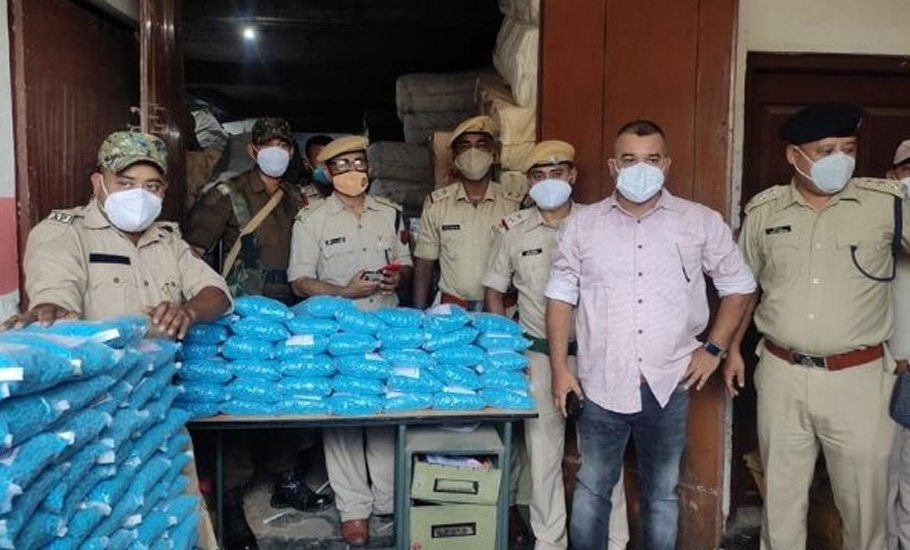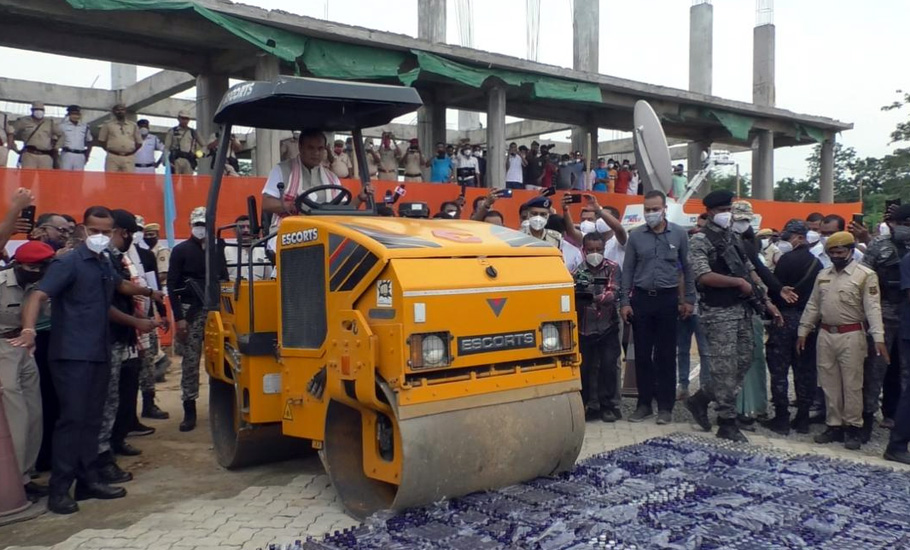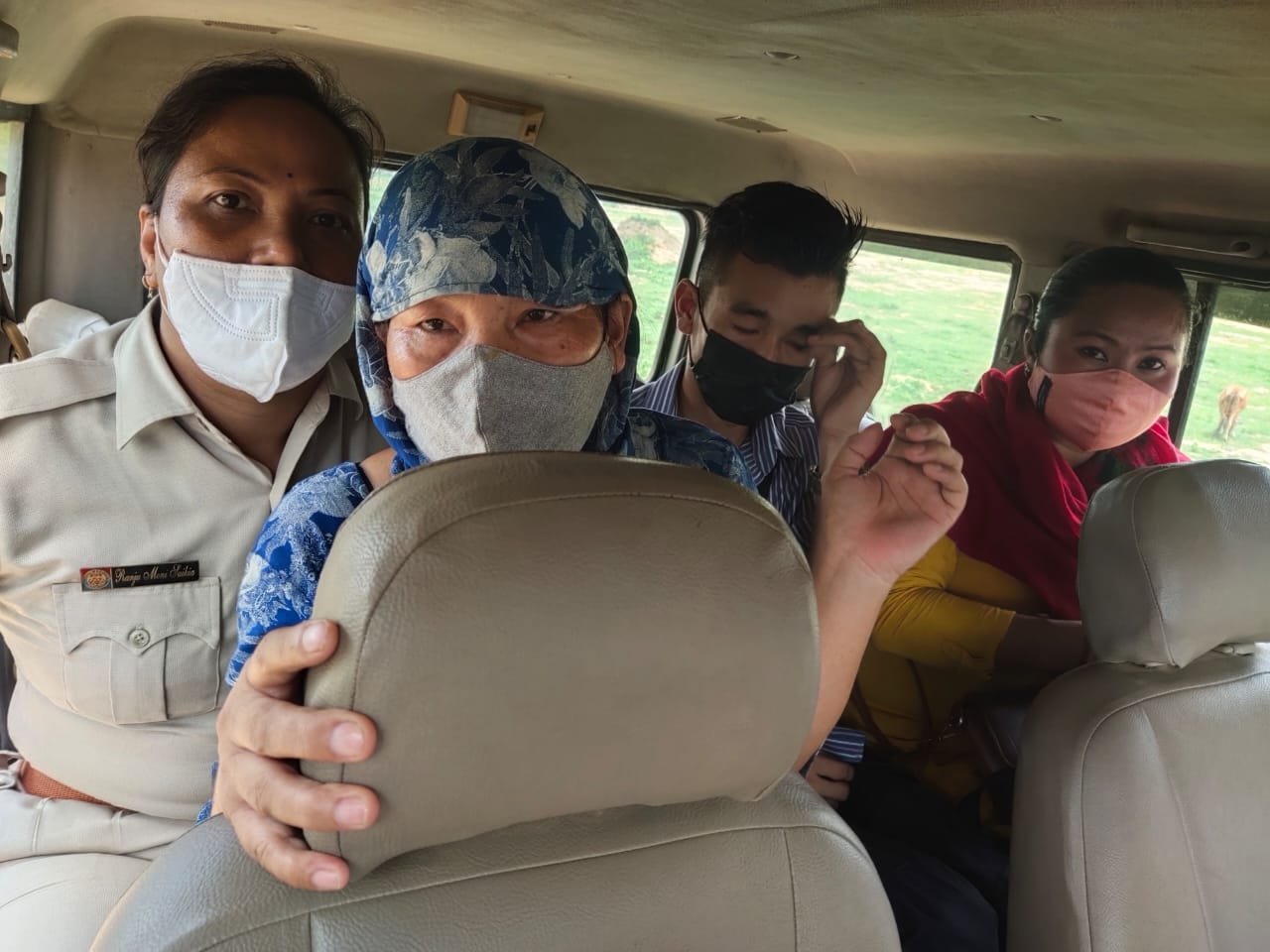
- Home
- News
- Analysis
- States
- Perspective
- Videos
- Education
- Entertainment
- Elections
- World Cup 2023
- Features
- Health
- Business
- Series
- Economy Series
- Earth Day
- Kashmir’s Frozen Turbulence
- India@75
- The legend of Ramjanmabhoomi
- Liberalisation@30
- How to tame a dragon
- Celebrating biodiversity
- Farm Matters
- 50 days of solitude
- Bringing Migrants Home
- Budget 2020
- Jharkhand Votes
- The Federal Investigates
- The Federal Impact
- Vanishing Sand
- Gandhi @ 150
- Andhra Today
- Field report
- Operation Gulmarg
- Pandemic @1 Mn in India
- The Federal Year-End
- The Zero Year
- Premium
- Science
- Brand studio
- Home
- NewsNews
- Analysis
- StatesStates
- PerspectivePerspective
- VideosVideos
- Entertainment
- ElectionsElections
- Sports
- Loading...
Sports - Features
- BusinessBusiness
- Premium
- Loading...
Premium

Northeast Narcos set for a showdown with state

Fifty-year-old Th. Paone is as unassuming as the town she made her operational base. Lahorijan, a one-street settlement squeezed between the National Highway 129 and the railway corridor that connects western parts of Assam with its eastern flank via Dimapur in Nagaland does not even qualify to be called a town. It would have remained just a dot in the map of Northeast had it not been for...
Fifty-year-old Th. Paone is as unassuming as the town she made her operational base.
Lahorijan, a one-street settlement squeezed between the National Highway 129 and the railway corridor that connects western parts of Assam with its eastern flank via Dimapur in Nagaland does not even qualify to be called a town.
It would have remained just a dot in the map of Northeast had it not been for its notoriety as a major transit point of narcotic trades in the region.
Initially, the chaotic settlement in Karbi Anglong district of Assam popped up as an illegal-liquor trade hub after neighbouring Nagaland was declared a dry state in 1989.
Thereon, it did not take much time for the border town, cramped with stranded trucks awaiting entry to Nagaland from Assam, to morph into a major narcotic trade centre.
Here, in the town’s shady taverns frequented by truckers, Paone known as “Didi” in her dubious circuit, operated a thriving drug trafficking business, which according to Assam police, was responsible for over 60 per cent of all the illegal drugs smuggled into Assam from the “Golden Triangle” via Manipur and Nagaland.
The “Golden Triangle” is a 150,000-square-mile, mountainous tri-junction where Thailand’s Chiang Rai province meets Myanmar and Laos. The region is the world’s leading producer of heroin and synthetic drug methamphetamine.
From Myanmar, the contrabands are smuggled into India from Moreh in Manipur and Champai in Mizoram, according to sources in the Narcotics Control Bureau of India.
The narcotics produced in the “Golden Triangle” region also find its way into India via Bangladesh. The drugs enter Bangladesh through its three border points with Myanmar located in Chittagong Hill Tracts—Naikhongchhari in Bandarban district and Teknaf and Ukhiya in Cox’s Bazar district, sources claimed.
The drug production increased in the Golden Triangle region, as per a United Nations report in 2019. The surge led to a corresponding spike in substance abuse in the north-eastern states.
The statewise data of cases registered under the Narcotics Drugs and Psychotropic Substance (NDPS) Act for the year 2017 to 2019 tabled in the Parliament on July 20 clearly shows the spike.
In Assam, the number of cases increased from 354 in 2017 to 841 in 2019. Similarly, in Nagaland, it went up from 81 to 142, in Meghalaya from 56 to 117, in Manipur from 275 to 338, in Mizoram from 139 to 160, in Tripura from 84 to 316 between 2017 and 2019. Only in Arunachal Pradesh, the number of cases remains static at 124.
The data is just a trend and not the enormity of the crisis, which has prompted many north-eastern states such as Assam, Arunachal Pradesh and Manipur to declare a war against the menace.

The most defining image of this war was Assam Chief Minister Himanta Biswa Sarma driving a road-roller over seized narcotics on July 18.
The Assam Police alone seized drugs worth ₹700 crore in the past two months and arrested several kingpins, including Paone.
“In a big breakthrough, @assampolice has busted a big supply chain network with narco terror angle in Karbi Anglong. Over 2 kg pure heroin worth ₹7 cr in international market seized. Compliments to Assam Police for relentlessly working on breaking the backbone of the drug cartel,” Assam chief minister Himanta Biswa Sarma had tweeted after Paone was arrested last month from near Lahorijan.
She was a “big player” in the narcotic trade which has emerged as a most challenging law-and-order problem in the region, said a Karbi Anglong police officer.
The problem has become so acute that Arunachal Pradesh Chief Minister Pema Khandu recently directed all government employees and police personnel in the state to undergo a toxicology test as many government employees are allegedly hooked to substance abuse.
The north-eastern states along with Punjab, Haryana and Uttar Pradesh figured prominently in the 272 worst drug-abuse affected districts in the country identified by the Narcotics Control Bureau.
The drug addiction has led to a major public health problem as a report by the National AIDS Control Organisation (NACO) last year pointed out that AIDS-related mortality per 1,00,000 population in India is very high in north-eastern states.
Sharing of a common syringe by the intravenous drug users is cited in the report as the major cause for the high prevalence of HIV/AIDS in the region.
“We had seen the movie Udta Punjab. We had seen the Punjab situation… We were unknowingly moving towards a situation showcased in Udta Punjab. A section is using drugs to destroy our whole society. We are witnessing activities similar to the underworld we see in Hindi movies,” Sarma told the Assam assembly recently pointing at the challenges posed by the drug menace.
“Assam has now become a destination from a transit point as has been manifested by the seizure of drugs from urban, semi-urban and even the hinterland of the state,” said Assam DGP Bhaskar Jyoti Mahanta.

The problem is expected to aggravate if not checked immediately as 2020 was marked as a boom year for Myanmar‘s drug trafficking syndicates following a drop in the price of methamphetamines in East and Southeast Asia. The price was at its lowest level in 10 years, as per a report of the United Nations Office on Drugs on Crime (UNODC).
The UNODC has predicted a larger flow of illegal drugs as the formal economy in Myanmar has collapsed due to strikes, protests, and violent crackdowns by the security forces in the aftermath of February 1 military takeover.
It said that organized drug cartels and their militias in eastern Myanmar will consolidate their control, taking advantage of the chaos unleashed by the coup.
Neither the menace of drug abuse nor the crackdown against it is new in Northeast which shares a 1,643 km-long border with Myanmar.
“There were operations against drug trafficking earlier as well. In 2016, we seized 10kg heroin and in 2020 27kg,” Sarma admitted.
“The drive against illicit drug trafficking is a good step, but unless the main people involved with it are arrested and the root cause of the problem is weeded out, the ongoing drive will not yield the desired results,” says a Guwahati-based social worker.
Paone was a big catch, but as Assam chief minister himself pointed out, most militant groups in the region are involved in the drug trade and using addicts to do their bidding.
Unless these militant groups are taken to task and also efforts are being made by India to help bring normalcy in Myanmar, the battle against drugs in Northeast will never be won.

